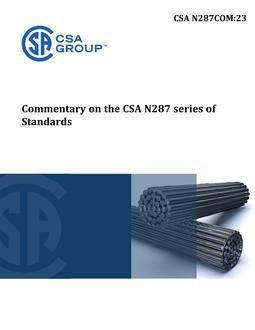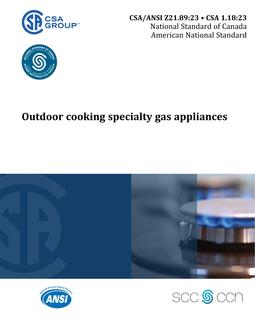
CSA F300-22
- Comments Off on CSA F300-22
- CSA
Preface
This is the second edition of CSA F300, Residential depressurization . It supersedes the previous edition published in 2013. This Standard provides homeowners, contractors, equipment manufacturers, and others involved in Canadian houses with information to help identify when residential depressurization could cause a health risk, and provides solutions to prevent or mitigate the build-up of combustion products in the house. It is intended for those who sell and install fuel-burning appliances and ventilation equipment, as well as designers, home builders, renovators, tradespeople, building officials, utilities, and homeowners. Major changes to this edition include: a) standard being revised to apply to new houses and existing houses; b) removal of the −5 Pa limit for solid fuel-burning appliances and the inclusion of CO alarm requirements for all solid fuel-burning appliances; c) inclusion of requirements related to the Depressurization Test Condition (DTC) test for all houses with non-solid, fuel-burning, spillage-susceptible appliances; d) inclusion of a −10 Pa limit for houses without non-solid, fuel-fired, spillage-susceptible equipment at the continuous ventilation condition; e) inclusion of a −25 Pa limit for houses without non-spillage-susceptible equipment and/or woodburning equipment at the DTC; and f) inclusion of requirements involving kitchen exhaust fans (if present) when conducting the depressurization test (i.e., all fans must be operated instead of only kitchen exhaust fans with capacities greater than 75 L/s). CSA Group acknowledges that the development of this Standard was made possible, in part, with the use of specific forms included from the Heating, Refrigeration and Air Conditioning Institute of Canada. This Standard is considered suitable for use for conformity assessment within the stated scope of this Standard. This Standard was prepared by the Technical Committee on Residential Depressurization, under the jurisdiction of the Strategic Steering Committee on Fuels and Appliances, and has been formally approved by the Technical Committee. This Standard has been developed in compliance with Standards Council of Canada requirements for National Standards of Canada. It has been published as a National Standard of Canada by CSA Group.
Scope
1.1 This Standard describes the methods for determining the level of depressurization and solutions to mitigate risk arising from depressurization.
1.2 This Standard applies to detached, semi-detached, and row houses equipped with an exhaust device(s). It also applies to houses with secondary suites equipped with a separate exhaust device(s).
1.3 This Standard does not address indoor air quality issues such as a) the presence of volatile organic compound (VOC) emissions from building materials or contents; b) the presence of mould in houses; or c) the presence of pollutants from other sources, such as stored chemical products.
1.4 This Standard does not address the impact of residential depressurization on radon infiltration and mitigation.
Note: Measured depressurization and the depressurization test methods contained within this Standard may be used for informational purposes to address such situations. Factors including but not limited to the existence and distribution of radon entry points, air leakage points in building envelop, and radon concentration in soil might affect the impact of residential depressurization on radon infiltration and indoor radon concentration.
1.5 The values given in SI units are the units of record for the purposes of this Standard. The values given in parentheses are for information and comparison only.
1.6 In this Standard, “shall” is used to express a requirement, i.e., a provision that the user is obliged to satisfy in order to comply with the Standard; “should” is used to express a recommendation or that which is advised but not required; and “may” is used to express an option or that which is permissible within the limits of the standard. Notes accompanying clauses do not include requirements or alternative requirements; the purpose of a note accompanying a clause is to separate from the text explanatory or informative material. Notes to tables and figures are considered part of the table or figure and may be written as requirements. Annexes are designated normative (mandatory) or informative (non-mandatory) to define their application.
Product Details
- Edition:
- 2nd
- Published:
- 08/01/2022
- ISBN(s):
- 9781488331961
- Number of Pages:
- 36
- File Size:
- 1 file , 770 KB
- Product Code(s):
- 2430298, 2430298
- Note:
- This product is unavailable in Russia, Ukraine, Belarus



